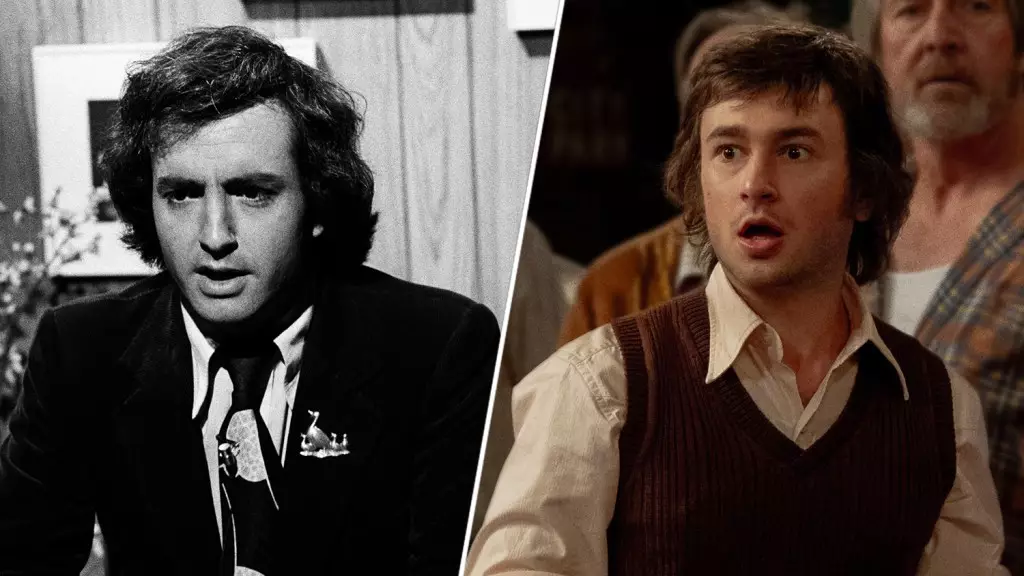Gabriel LaBelle is taking on a monumental task with his portrayal of Lorne Michaels in the film “Saturday Night,” which embarks on an exploration of the genesis of “Saturday Night Live.” LaBelle’s immersion into this iconic television moment, which first aired on October 11, 1975, provides an integral portrayal that resonates not just with history but with the myriad emotions tied to the birth of a cultural phenomenon. The film, previously referred to by the working title “SNL 1975,” chronicles the frenzied hours leading up to the inaugural broadcast of a show that would irreversibly alter the landscape of American entertainment.
In an intriguing turn of events, LaBelle visited the actual venue of the original broadcast: 30 Rockefeller Plaza. This set of circumstances allowed him not just to film outside the famed studio but to witness the excitement and chaotic energy associated with live television. He had the rare opportunity to attend a live taping of “Saturday Night Live,” where actors, directors, and producers come together to create magic in real-time. LaBelle recounted, “Lorne was super cool and invited us to watch the Josh Brolin episode live,” which indicates the congenial atmosphere that still surrounds the show decades after its inception.
Meeting Lorne Michaels—the mastermind behind “Saturday Night Live”—was clearly a highlight for LaBelle. Their brief conversation, though limited in scope, was undoubtedly significant for the actor, who found himself near figures like Scarlett Johansson and director Jason Reitman. Such encounters illustrate the film’s exploration of the vibrant connections forged in the world of comedy and television—a testament to the powerful people behind this beloved institution.
Directed by Jason Reitman, the film brings together a talented cast, including Rachel Sennott, Dylan O’Brien, and many others, each embodying legendary figures from the SNL cast of the 1970s. The film serves not only as a historical recounting but as a tribute to the unique comedic style that emerged from this eclectic group of individuals. It showcases how a handful of ambitious writers and performers revolutionized television, paving the way for future generations in an industry primarily dominated by traditional formats at the time.
However, the film’s plot raises questions about the nature of creativity and collaboration. LaBelle commented on his impression of Michaels, revealing uncertainty about whether Michaels has seen his performance yet. This speaks to the nuances of creative interpretations and how a subject’s reaction, or lack thereof, can shape a portrayal. In this regard, it’s essential to consider how personal connections and interpretations can influence the perception of art, particularly when that art reflects real-life individuals.
The premiere of “Saturday Night” not only commemorates the show’s rich history but also prompts reflection on how SNL continues to shape comedic discourse. With its reputation for political satire and societal observations, SNL remains a staple in American culture. LaBelle’s portrayal adds a layer of authenticity to this retelling, allowing audiences to appreciate not only the show’s inception but also the primal energies and tensions that made such a groundbreaking program possible.
As Reitman himself has suggested, the reaction of Lorne Michaels to the film may remain elusive—a testament to the enigmatic personality that successfully navigated the turbulent waters of comedy and television. The director alluded to Michaels’s cryptic nature, implying that understanding the mind behind something as influential as SNL might be as challenging as portraying it faithfully. Ultimately, “Saturday Night” does more than celebrate a specific night in television history; it serves as a reflection on the ongoing discourse in comedic arts and the legacy of those who dare to push boundaries.
The film is set for a wider audience release on October 11, promising to be a fascinating journey into the world of comedy and the compelling story of an American staple. It invites viewers not just to look back but to consider the impact of a show that continues to resonate with new generations, proving that the essence of comedy lies in its ability to adapt, critique, and entertain across eras.


Leave a Reply